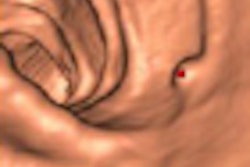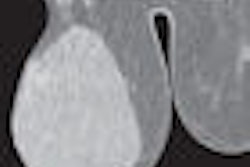
NEW YORK (Reuters Health), Jun 24 - In a study of type 2 diabetics with no history or symptoms of heart disease, nearly all had evidence of coronary vascular dysfunction on PET imaging.
The study results were presented in New Orleans last week during the 2008 meeting of the SNM -- Advancing Molecular Imaging and Therapy, by lead investigator Dr. Thomas Schindler of the University Hospitals of Geneva, Switzerland.
"Diabetic patients have the highest risk of coronary artery disease," Schindler pointed out. "That's why we chose this group."
Myocardial blood flow was measured with PET at rest and during vasomotor stress in 23 normotensive diabetics, 13 hypertensive diabetics, and 32 controls.
In addition to PET imaging, all patients underwent measurement of carotid intima-media thickness (IMT) and coronary artery calcification using high-resolution vascular ultrasound and electron beam tomography.
In the diabetics, the mean interval since diagnosis was seven years, but Schindler noted that actual disease duration was probably several years longer.
"We found that 80% of diabetics had abnormal vascular function, another 10% had borderline abnormalities, and only 10% had normal circulation on PET imaging," Schindler told Reuters Health in an interview after his presentation.
Schindler reported "significantly lower" cold pressor test changes in myocardial blood flow in both groups of diabetics compared with controls. The adenosine-related coronary vascular resistance was significantly lower in controls than in diabetics.
The carotid IMT did not differ between controls and normotensive diabetics but was significantly greater in hypertensive diabetics.
Coronary artery calcification was found in 49% (33 patients), with no significant difference between the two groups of diabetics.
"Vascular dysfunction of the coronary artery, reflecting an early functional stage of diabetes-related coronary artery disease, can be detected by PET before structural alterations of the arterial wall may manifest," Schindler announced.
"PET imaging may eventually be used for primary care purposes," Schindler said. "If abnormalities are found, the patient can be put on preventative therapy, or therapy can be intensified if they are already on it."
At this point, Schindler said, PET imaging is not a useful screening tool. The radiation dose used may be too high for a screening technique, and PET imaging is currently very costly.
By Martha Kerr
Last Updated: 2008-06-23 16:16:54 -0400 (Reuters Health)
Related Reading
PET predicts outcomes in diabetic patients with left ventricular dysfunction, July 25, 2005
Copyright © 2008 Reuters Limited. All rights reserved. Republication or redistribution of Reuters content, including by framing or similar means, is expressly prohibited without the prior written consent of Reuters. Reuters shall not be liable for any errors or delays in the content, or for any actions taken in reliance thereon. Reuters and the Reuters sphere logo are registered trademarks and trademarks of the Reuters group of companies around the world.


















